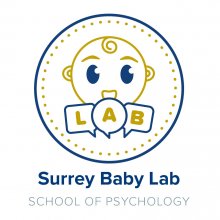

Research methods
We use lots of different techniques at the Surrey Baby Lab to help us answer important questions about how infants and babies interact with the world.
Electroencephalogram (EEG)
The EEG technique allows us to record the natural brain activity of the child. This activity is recorded through passive sensors that are fitted on a cap and placed on the baby's head. EEG is a very useful technique, especially for babies, as it is non-invasive, and can tell us about how babies’ brains respond to different types of information.
Videos
Eye tracking
Eye tracking uses a special camera that can follow the child's eye movement whilst they view images on a screen. This allows us to see the amount of time babies and children spend looking at different parts of a visual scene, helping us to find out how infants interact with the world around them and what types of stimuli capture their attention.
Videos
- Understand what eye tracking is and how it works
- Watch an example of a child in an eye tracking study
Research ethics
Our research is approved by the Ethics Committee at the University of Surrey. Data are confidential and anonymised where appropriate. You can ask for your data to be removed at any time. If there are any queries or concerns in regard to this topic, please contact our Surrey Baby Lab Team.
